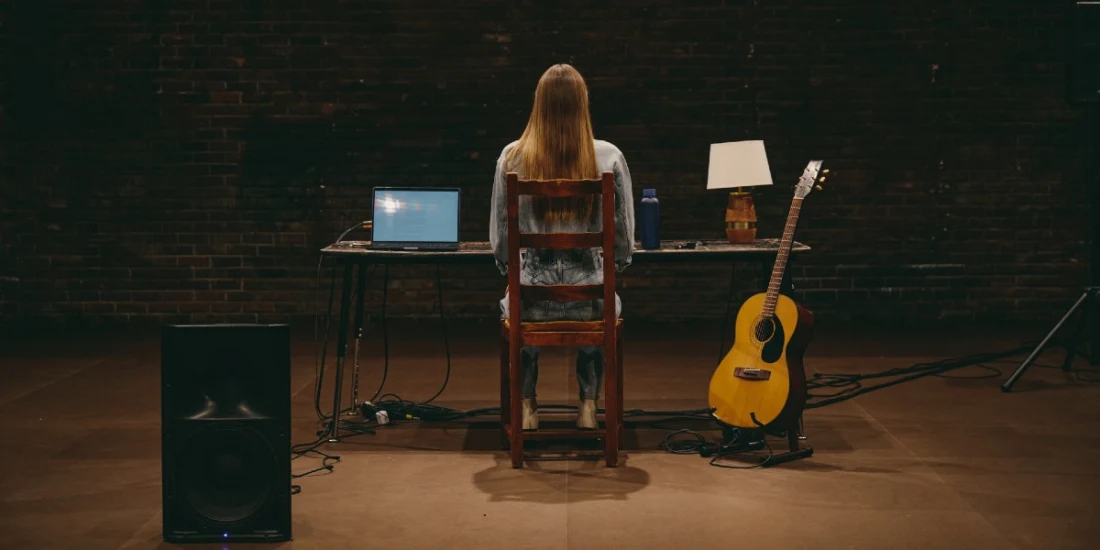‘I Love You So Much I Could Die’ review — computing the words for sadness
Read our five-star review of I Love You So Much I Could Die off Broadway, a play with music written and performed by Mona Pirnot and directed by Lucas Hnath.
When liver cancer consumed my father, my 16-year-old brain willed itself to think of trashy YouTube comedians. I wanted to do anything with my mind but grieve. Playwright/performer Mona Pirnot's one-person play I Love You So Much I Could Die transported me back to this memory. The play defies description in its portrait of grief: the grief over loss and the grief over a loss that has yet to happen.
Mimi Lien's scenic design strips down the New York Theatre Workshop stage to its bare essentials: a desk, a shaded lamp, a Mac laptop hooked up to a speaker, a guitar on the rack, and Pirnot, seated with her back to us for the entire 65 minutes’ worth of monologues. Pirnot does not speak them — or rather, she speaks in an unorthodox sense. She presses a computer key, and a text-to-audio tool recites the script. When the Mac is not "speaking," Pirnot sings and strums homemade songs about love. (Her husband, playwright Lucas Hnath, is the show's director and an unseen but significant character in the play.)
The staging of I Love You So Much I Could Die – and a request that critics not reveal certain details of Pirnot’s story out of respect for her family – made me think about sharing in private and theatrical contexts. How do we share grief? Pirnot, perhaps counterintuitively, denys the audience eye contact and withholds a literal human voice from her script, entrusting it to a computer. Some may suspect these choices limit our emotional connection to the play.
But don’t mistake Pirnot's format for detachment from the audience. It’s miraculous — and provocative for the AI-averse — that Pirnot harnesses machine-spoken text to meet the play’s emotional requirements (thanks to the clarity of sound design by Mikhail Fiksel and Noel Nichols), or perhaps it’s a testament to her rich text. The computer becomes an extension of Pirnot (it wouldn’t work if she wasn’t physically present), the same way her guitar is an outlet for her sorrow. The calibrated beats capture the minutiae of enduring anguish. And if pain can’t be spoken, it can be spun into yearning lyrics about love and how it's worth the price of mortality.
When the lights rose after the curtain call, two women behind me screeched, “It was the most tedious thing to sit through,” as if they wanted to re-mold Pirnot’s vision into their understanding of the theatrical form. Perhaps Pirnot’s depiction of grief offends their own framework – it won’t fit everyone. Each person has a different way of sharing excruciating ordeals, and each audience member will have their own way of reading Pirnot’s creative choices.
It's common to judge plays about grief on physical performance: facial expressions, the volume of speech, wobbling anguish, tears. Theatre invites an instinct to measure intensity and spectacle. I Love You So Much I Could Die refuses to settle into this rubric.
Photo credit: Mona Pirnot in I Love You So Much I Could Die. (Photo by Jenny Anderson)
Originally published on
